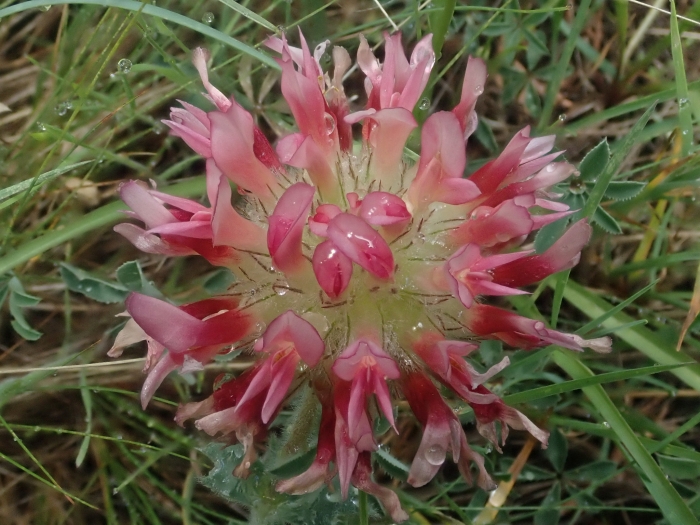Largehead Clover
(Trifolium macrocephalum)
Largehead Clover (Trifolium macrocephalum)
/
/

Nolan Exe
CC BY 4.0
Image By:
Nolan Exe
Recorded By:
Copyright:
CC BY 4.0
Copyright Notice:
Photo by: Nolan Exe | License Type: CC BY 4.0 | License URL: http://creativecommons.org/licenses/by/4.0/ | Rights Holder: Nolan Exe | Publisher: iNaturalist | Date Created: 2020-05-31T08:02:22-07:00 |

























Estimated Native Range
Summary
Trifolium macrocephalum, commonly known as largehead clover, is a rhizomatous perennial herb that is native to the Pacific Northwest of the United States, specifically adapted to a variety of habitats including sagebrush scrub, juniper woodlands, yellow pine forests, and mountain meadows. It is particularly found in areas with rocky, thin soils, often at elevations from 300 to 2400 meters. The plant typically grows to a height of 10-30 cm and features hairy herbage. Its distinctive leaves are composed of five to six thick oval leaflets, and it produces large, egg-shaped inflorescences up to 5 cm long. The flowers, which bloom from April to July, are pink to lavender and sometimes bicolored, offering a showy display in the spring.
Largehead clover is valued for its ornamental qualities, particularly its large and attractive flower heads which are larger than those of most other clover species. It is used in wildflower meadows, native plant gardens, and for restoration projects due to its adaptability and the nitrogen-fixing ability that benefits soil health. This species requires minimal maintenance once established and is drought-tolerant, making it suitable for xeriscaping. It thrives in full sun to partial shade and prefers well-drained soils. While generally disease-free, it can be susceptible to root rot in poorly drained conditions.CC BY-SA 4.0
Largehead clover is valued for its ornamental qualities, particularly its large and attractive flower heads which are larger than those of most other clover species. It is used in wildflower meadows, native plant gardens, and for restoration projects due to its adaptability and the nitrogen-fixing ability that benefits soil health. This species requires minimal maintenance once established and is drought-tolerant, making it suitable for xeriscaping. It thrives in full sun to partial shade and prefers well-drained soils. While generally disease-free, it can be susceptible to root rot in poorly drained conditions.CC BY-SA 4.0
Plant Description
- Plant Type: Herb
- Height: 0.5-1.5 feet
- Width: 0.5-1.5 feet
- Growth Rate: Rapid
- Flower Color: Pink, Purple, White
- Flowering Season: Spring, Summer
- Leaf Retention: Deciduous
Growth Requirements
- Sun: Full Sun, Part Shade
- Water: Low
- Drainage: Fast, Medium
Common Uses
Butterfly Garden, Low Maintenance, Rock Garden
Natural Habitat
Pacific Northwest of the United States, including sagebrush scrub, juniper woodlands, yellow pine forests, and mountain meadows
Other Names
Common Names: Large-Head Clover
Scientific Names: , Trifolium macrocephalum, Lupinaster macrocephalus, Pentaphyllon macrocephalum, Trifolium macrocephalum var. caeruleomontanum, Trifolium megacephalum,
GBIF Accepted Name: